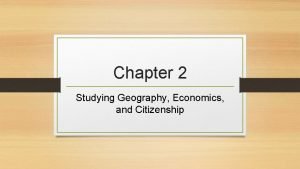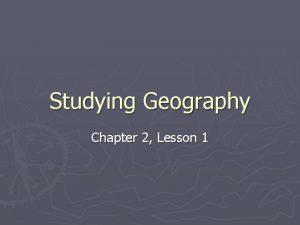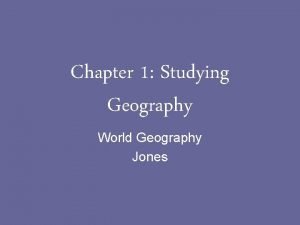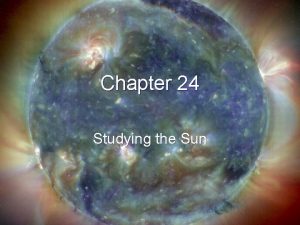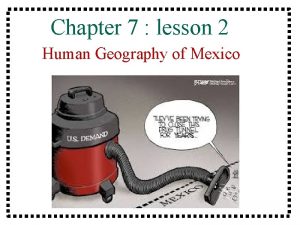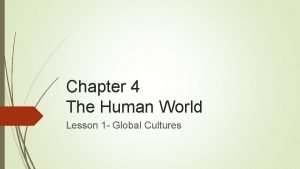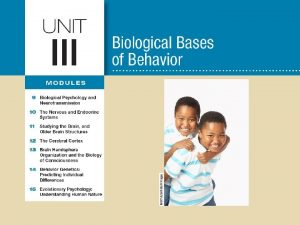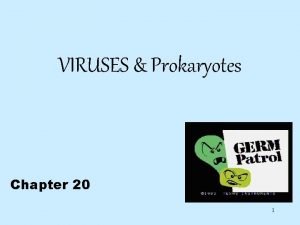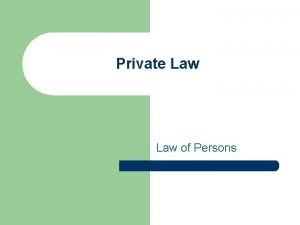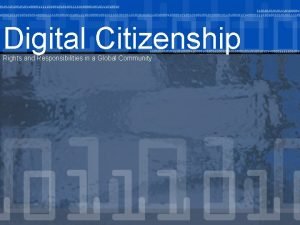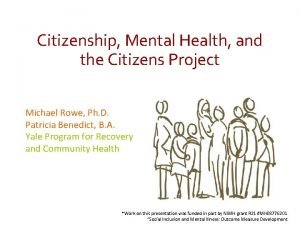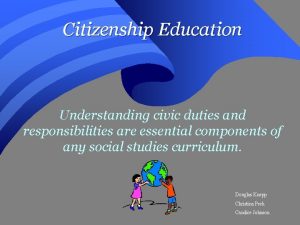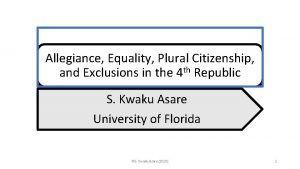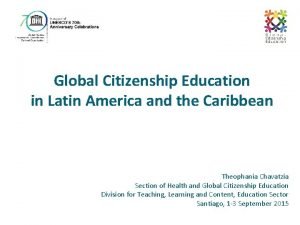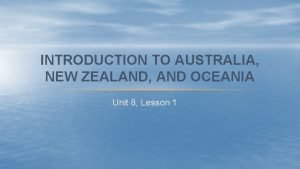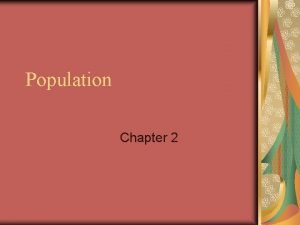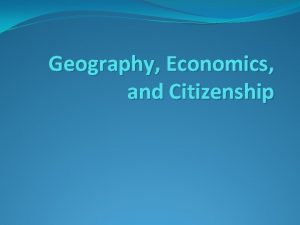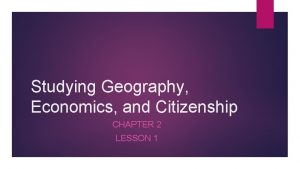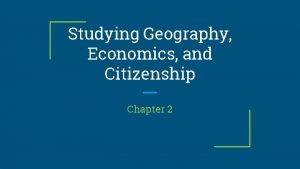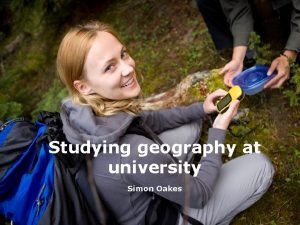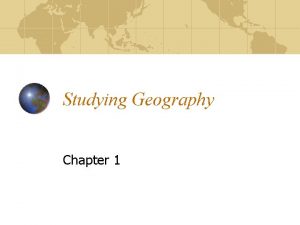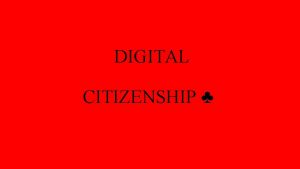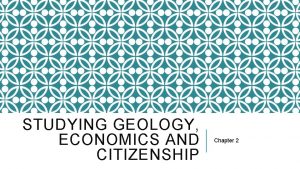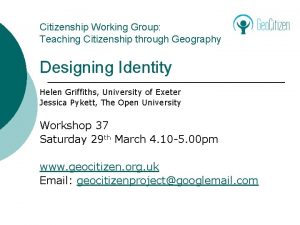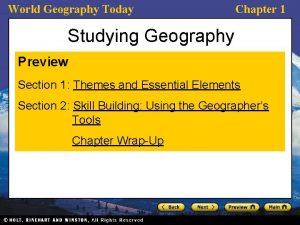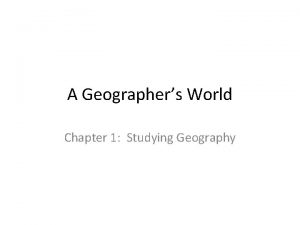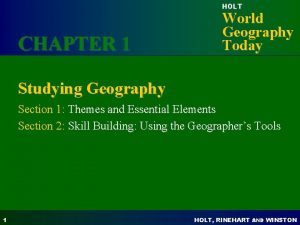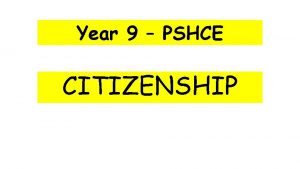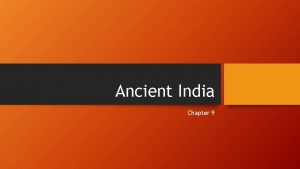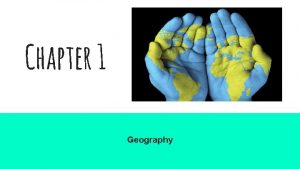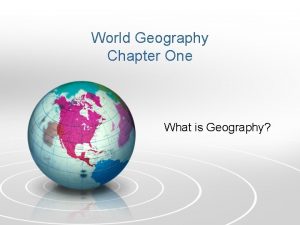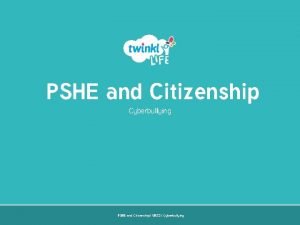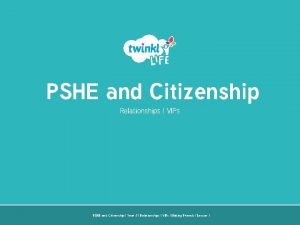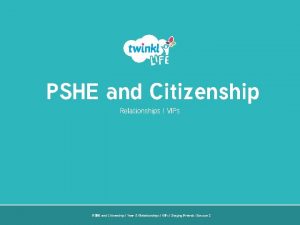Chapter 2 Studying Geography Economics and Citizenship Lesson


























- Slides: 26

Chapter 2 Studying Geography, Economics, and Citizenship

Lesson 1 Studying Geography

Displaying the Earth’s Surface • The earth is shaped as a globe. • A globe is a spherical scale model. • Best shows sizes of continents, shapes of lanmasses, and bodies of water. • Maps • Flat drawings of all or parts of Earth’s surfaces. • Similar features • Imaginary lines that divide into hemispheres

Hemispheres • Equator is the middle line; circles the middle of the earth like a belt • North Hemisphere • South Hemisphere • Prime Meridian • East Hemisphere • West Hemisphere

Finding Places on Earth • Latitude and Longitude form a grid system • Latitude is parallel to the Equator • Measure distance North to South • Longitude is parallel to the Prime Meridian • Measure distance East to West

Five Themes and Six Essential Elements of Geography • Five Themes • • • Location Place Human-Environment Interaction Movement Regions

Five Themes and Six Essential Elements of Geography • Six Essential Elements • • • The World in Spatial Terms Places and Regions Physical Systems Human Systems Environment and Society The Uses of Geography

Type of Maps • Physical Maps • Show land water • Color include brown/green for lands; blue for water • Show elevation • Political Maps • Show names and borders of countries • Location of cities and human-made features • Major physical features of land area • Special-Purpose Maps • Specific kinds of information

Reading Maps • Symbols- signs or picture used on a map • Scale- measuring line that tells the distances between places on a map • Cardinal Directions (N-S-E-W)


Using Charts, Graphs, and Diagrams • Tools that show information • Title give the subject • Different kinds • Bar graphs, pie graphs, line graphs, diagrams • Climate bar graph or Climograph shows long-term weather pattern

Population and Culture • Population • Choropleth- uses colors to show population density • Migration • Culture- set of beliefs, behaviors, and traits • Language, religion, government, customs

Lesson 2 Exploring Economics

What is Economics? • What goods and services should we offer? • How should we create and distribute thee goods and services? • Who will use these good and services?

What is Economics? • Resources and production • Four kinds of resources: land, labor, capital, entrepreneurship • • Land- natural resources Labor-Ability to do work Capital- money and goods use to help people make or do things Entrepreneurship- running a business and taking on riks

Supply and Demand • First get good or service that is needed. Then, figure out how much of that good or service to offer. • Supply: amount of good a producer wants to sell • Demand: amount consumer wants to buy • The law of demand says that the lower the price of a good or service, the more of it people will want to buy. • Textbook p. 39

Things that affect supply and demand. . . • Scarcity • Opportunity cost- what you give up to make it or buy it

Managing and Measuring Economies • Economic Systems • Traditional Economy • Based on custom • Children do same job as parent • Command Economy • Central gov’t decides what goods will be made and by who • Market Economy • Each person makes choices about what to make, sell, and buy

Managing and Measuring Economies • Economies grow and shrink over time a. k. a. the business cycle • Recession: economy rises slowly • Inflation: rising prices; money buys less

Trade in World History • Why do people trade? When both sides can benefit. • Exports • Imports • Early civilizations often trade by bartering • Goods and services are traded for other goods and services

Trade in World History • Barriers to Trade • • Conflict Geography Communication Production in own country • Global Trade • Globalization: international trade

Lesson 3 Practicing Citizenship

Principles of Goverment • • U. S. Constitution Representative government: citizens elect gov’t officials Federal system: divides powers between central and state gov’t Separation of powers: divided among branches (legislative, executive, judicial) • Checks and balances

What is Citizenship? • Civic participation refer to the duties and responsibilities of all citizens. • Comes from ancient Greece and Rome • As citizens we have certain right such as freedom of expression and the right to vote

Duties and Responsibilities • • Obey all federal, state, and local laws Pay federal, state, and local taxes Serve on a jury People born in other countries can become citizen Stay informed about important issues and topics Respect views and rights of others Take part in local community

Being a Global Citizen • Learn about the different issues that affect the world as a whole • • Other’s way of life Political hardships Hunger For example- Syrian immigrants • How can you make the world a better place?
 Chapter 2 lesson 1 studying geography
Chapter 2 lesson 1 studying geography Guided reading lesson 1 studying geography answer key
Guided reading lesson 1 studying geography answer key Lesson 1 studying geography
Lesson 1 studying geography School of business and economics maastricht
School of business and economics maastricht Chapter 24 studying the sun
Chapter 24 studying the sun Inefficiently low quality definition economics
Inefficiently low quality definition economics Econ213
Econ213 Chapter 15 lesson 1 physical geography of north africa
Chapter 15 lesson 1 physical geography of north africa The barren rocky topography
The barren rocky topography Lesson 2 human geography of canada
Lesson 2 human geography of canada Chapter 5 lesson 1 physical geography of the united states
Chapter 5 lesson 1 physical geography of the united states Lesson 1 global cultures
Lesson 1 global cultures Module 11 studying the brain
Module 11 studying the brain Section 1 studying viruses and prokaryotes
Section 1 studying viruses and prokaryotes Private law
Private law Digital rights and responsibilities
Digital rights and responsibilities Mental health and citizenship
Mental health and citizenship Civic citizenship
Civic citizenship Citizen plural
Citizen plural Global citizenship education topics and learning objectives
Global citizenship education topics and learning objectives Ap human geography frq examples
Ap human geography frq examples 5 themes of geography ap human geography
5 themes of geography ap human geography Ap human geography political geography test
Ap human geography political geography test Lesson 1: an introduction to oceania
Lesson 1: an introduction to oceania Chapter 1 lesson 1 your total health lesson 1 quiz answers
Chapter 1 lesson 1 your total health lesson 1 quiz answers Researchers who are studying a new shampoo
Researchers who are studying a new shampoo Demographic transition def
Demographic transition def
